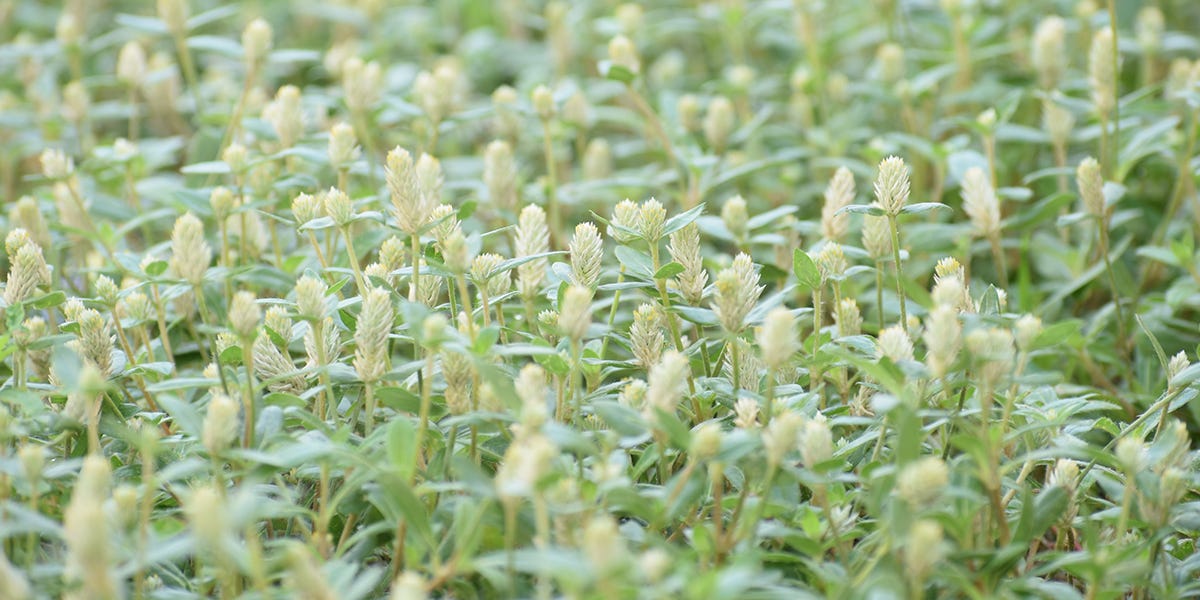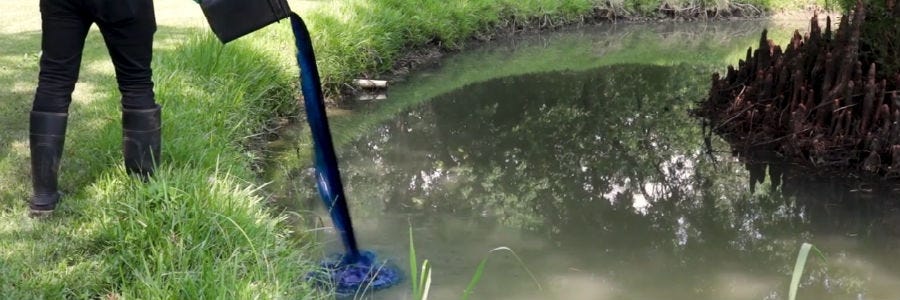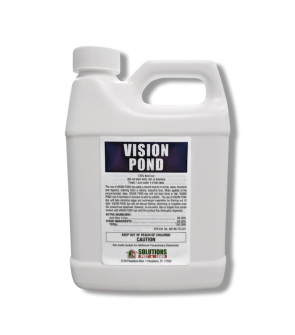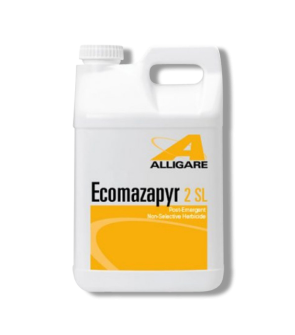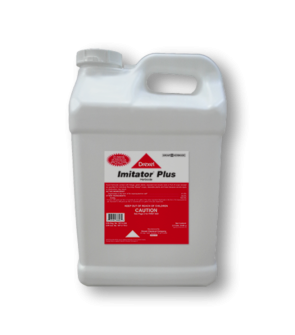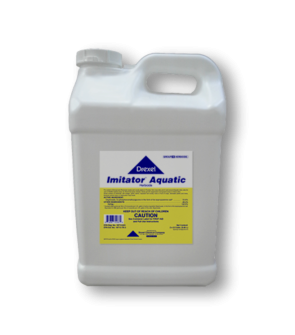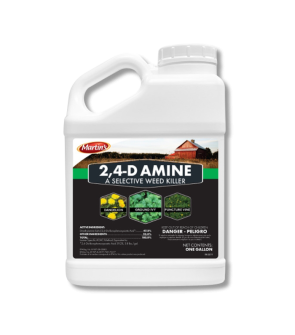Gain access to personalized product screening, the best pricing, rewards, and more!
Most Effective Products
Alligator Weed Control: How To Get Rid of Alligator Weed
This page is a general alligator weed control guide. You will get control of alligator weed using the products and methods suggested. Follow this guide and use the recommended products; we guarantee 100% control of alligator weed.
Alligator weed, also known as pig weed, alligator grass, red legs, alligatorweed, Achyranthes philoxeroides, Alternanthera paludosa, Alternanthera philoxerina, Bucholzia philoxeroides, or Telanthera philoxeroides is an invasive aquatic weed species that originated from South America. It is known for forming dense mats on water surfaces that hinder recreational water activities. Experts have regarded it among the world's worst weeds because it easily outcompetes native plant species.
If left untreated, alligator weed can become a serious ecological, economic, and biological threat. It creates a thick mat that can clog waterways, reducing water flow and depleting oxygen due to weed decay.
If you have alligator weed on your pond or water body, aquatic herbicides can help treat the problem. Our DIY alligator weed treatment guide below offers expert advice and professional product recommendations, which can help you easily get rid of alligator weed.
Identification

Before you can carry out a control program, you must ensure that you are dealing with alligator weed and not some other invasive species of aquatic weed. Misidentification can lead to the use of the wrong treatment methods and products, which can be a waste of time and money. Here are some facts and traits of alligator weed so you know what they look like:
- Alligator weed is an aquatic perennial plant with long, hollow, buoyant stems that can be dark green, pink, red, or dull reddish-purple. The stems can be single or branched and reach up to 4 feet in length. On land, it can produce underground stems that reach a depth of 1 m in soil.
- The leaves appear glossy and dark green in color, with an elongated lance shape. They have no leaf stalk (petiole) and are arranged in opposite pairs along the stem. Its leaves range from 1.5 to 4 inches long and up to 3/4 inches wide.
- Flowers are white, paper-like, ball-shaped, and appear mid to late summer on short stalks (2-7 cm) of the alligator weed.
Use the description and image above to help you properly identify alligator weed on your water property. If you aren't sure you are dealing with invasive alligator weed, contact us, and we will try to help you correctly identify the weed.
Inspection

Once you have correctly identified alligator weed, proceed to an inspection. During this phase, you will locate the areas where alligator weed is concentrated and observe the conditions that may be helping the weed thrive.
Where to Inspect
Alligator weed can grow just about anywhere, forming large patches on water and land.
It commonly invades freshwater sites, estuaries, lakes, rivers, streams, damp habitats, ditches, marshes, pond edges, streams, wetlands, and other slow-moving water bodies.
This weed may also be found in wet areas on dry land sites such as gardens, agricultural fields, and between crops with plenty of moisture.
What to Look For
Alligator weed can give itself away easily because it is so fast-growing and dominant that it will stand out in aquatic areas even among other plants. It has opposite leaves coming off a hollow stem, which gives it the ability to float. In the summertime, alligator weed grows a white clover-like flower.
Treatment
Before handling any herbicides, make sure to wear the proper personal protective equipment (PPE), such as gloves, glasses, and a respirator mask.
Our top herbicide recommendation for effectively controlling alligator weed is Ecomazapyr 2 SL Aquatic Herbicide. It delivers broad-spectrum control, is easy to use, and is cost-effective.
Step 1: Mix the Ecomazapyr 2 SL

Before using Ecomazapyr 2 SL, you must calculate the area size to be treated by finding the square footage.
You can find this by measuring the treatment area's length and width in feet, then multiplying them together (length x width = square footage). To get acreage, you would need to take the square footage you calculated and divide by one acre (square footage / 43,560 = acreage).
Apply 1 to 4 pints of Ecomazapyr 2 SL Herbicide per 100 gallons of water per acre. As a spot treatment, use 0.72 to 1.45 fl. oz. of product per 1 gallon of water per 1,000 sq. ft.
This product will need to be applied with a spray rig, watercraft, helicopter, backpack sprayer, or a handheld pump sprayer.
To mix, fill the sprayer with half the amount of water then add in the proper amount of product. Pour in the remaining half of water and shake the tank until well-mixed. Agitate the sprayer well to mix the solution, and you're ready to spray.
Step 2: Spray The Alligator Weed
When applying the Ecomazapyr 2 SL mixture, select a time in the early morning or late evening when the wind is calm to prevent spray drift into unwanted areas.
Adjust the nozzle on the spray wand to a narrow pattern to achieve good coverage without over-concentrating the herbicide.
Spray the top and bottom of the leaves of the alligator weed, but do not apply the herbicide to the point of runoff.
For aquatic site treatments, do not treat more than one half of the surface area of the water in a single operation and wait at least 10 to 14 days between treatments.
Do not apply within one-half mile downstream of an active irrigation water intake.
Keep people and pets out of the treated area for 48 hours after application.
Prevention
After you have treated the alligator weed on your property, they should no longer be an issue. However, it is important to implement some preventative measures to ensure that alligator weed doesn't return.
- Alligator weed spreads mainly from seed or fragmentation. To keep alligator weed from coming back, keep everything clean if you are active in your waterbody. This means that any equipment you use, your boat, or anything else that comes in contact with the water should be cleaned.
- We also suggest applying Vision Pond Dye to your water body. This product is a filtering agent that helps reduce vegetation growth. Apply at a rate of 1 quart per surface acre of water at a 5-foot average depth. Add the product to a bucket and pour it directly into your pond or water body at the edge. The water's natural movement will disperse the dye.
- Using Ecomazapyr 2SL periodically can also work as a preventative measure. Monitor your water body regularly to make sure nothing unusual is growing. Early detection and removal will keep alligator weed from re-establishing.
Key Takeaways
What is Alligator Weed?
- Alligator weed is an invasive species that can form thick mats and take over a water body. Infestations can get so bad that they can even spread onto land.
How to Get Rid of Alligator Weed
- Ecomazapyr 2 SL has proven to deliver the best results in eradicating alligator weed and is our go-to recommendation for control.
Preventing Alligator Weed Reinfestation
- Vision Pond Dye can be a great preventative measure to keep the alligator weed from returning. Periodic applications of Ecomazapyr 2SL can also reduce the chances of alligator weed re-emerging on a water body.






